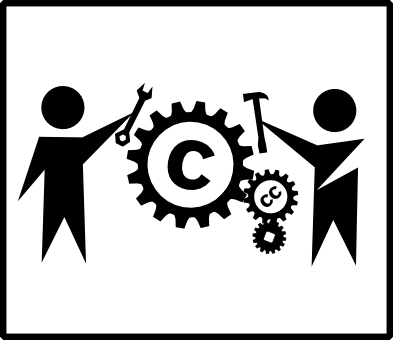(Déjà vu? This is a very slight reworking of a post from the Graduate Center Library blog.)

Image is CC BY-NC-ND from JISC.
You might have noticed that CUNY librarians talk a lot about open access — sometimes in conversations about dissertation embargoes, sometimes on the topic of authors’ rights, sometimes in the context of Academic Works, CUNY’s soon-to-arrive institutional repository (already up and running at the Graduate Center). But maybe you’ve never really gotten a full explanation of what open access is. Or maybe you know what it is but aren’t convinced it’s a pressing issue. Or maybe you understand how it affects you as a reader but aren’t sure how you should factor it into your actions as an author.
I recently wrote a piece about open access for the “Jargon” column of the sociology magazine Contexts, and it might address some of your questions.
What is open access?
“Even if the term ‘open access’ is not in your working vocabulary, you almost certainly understand the phenomenon of open access, or free online availability, as well as its opposite, placement behind a paywall. Of course, an enormous number of news articles, blog posts, and cat videos are freely available online, but ‘open access’ is not usually used to describe those kinds of online offerings. Rather, the conversation about open access centers on research and academic works—journal articles, scholarly books, textbooks, and dissertations—which are usually available only for a fee.”
But what should I care, and what’s wrong with journal subscriptions, anyway?
“Most social action for open access has focused on scholarly journals, largely because many journal subscriptions are wildly expensive, out of proportion with the costs of publishing. In 2012 the Economist reported, ‘Publishing obscure academic journals is that rare thing in the media industry: a [license] to print money.’ Indeed, seemingly arbitrarily high subscription prices that increase year after year have left readers, libraries, and universities feeling gouged. Furthermore, many authors wish to dissociate themselves from commercial publishers that make huge profits from nonprofit institutions, preferring to participate in a publishing system that better connects readers with research and is more consistent with their values. For these reasons and more, journals are a natural starting point for an upheaval in the academic publishing industry.”
So what’s in it for me?
“[J]ournal publishers do not pay their authors, so authors do not lose any income by making their works freely available. In fact, they stand to benefit from open access: When articles are easy to find and free to read, they attract more readers, generate more discussion, and get cited more in later articles.
Of course, authors aren’t the only beneficiaries of open access. When journal articles are freely available, students can better master their fields; scholars can better perform their research; and teachers, doctors, policy-makers, and journalists can better perform their jobs. As a result, everyone benefits, even those who do not themselves read the articles.”
How do I achieve open access?
“There are two ways for an author to make a scholarly article open access. The first, widely known as ‘gold’ open access, is to publish it in a journal that is itself open access—that is, the publisher immediately and permanently makes the journal’s articles freely available online. There are many open access journals—the Directory of Open Access Journals (DOAJ) lists almost 10,000—published by many kinds of entities, including universities, commercial publishers, scholarly societies, and professional organizations.
. . .
Another path to open access is called ‘green’ open access, achieved when an author uploads a work to an open access repository hosted by the author’s institution or a disciplinary repository such as the Social Science Research Network (SSRN). Although many authors do not realize it, most journals allow authors to self-archive some version of their article, either the original submission, the edited text, or the journal’s final formatted version. Furthermore, many agencies and institutions have policies that require the researchers they fund or employ to make their articles open access within some fixed amount of time; these policies help make many thousands of articles open access every year. Some publishers reject such policies and lobby against legislation to ensure that taxpayers have access to the research they fund, but their arguments are transparently self-serving and unlikely to prevail in the end.
Right now, green open access is spotty—common and even de rigueur in some fields, but far from universal and not yet leading to reductions in subscription burdens. However, as more researchers and institutions actively support open access, self-archiving will spread. One hope is that green open access will become so prevalent that subscription-based journals will be pressured to lower their subscription prices or change their business model.”
Want to know more?
Read the full column in Contexts or glance at this overview of the very basics of open access. Or contact me or your librarian to learn more!




